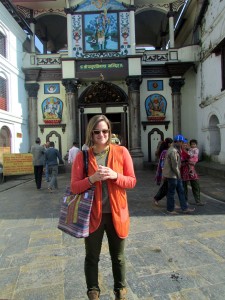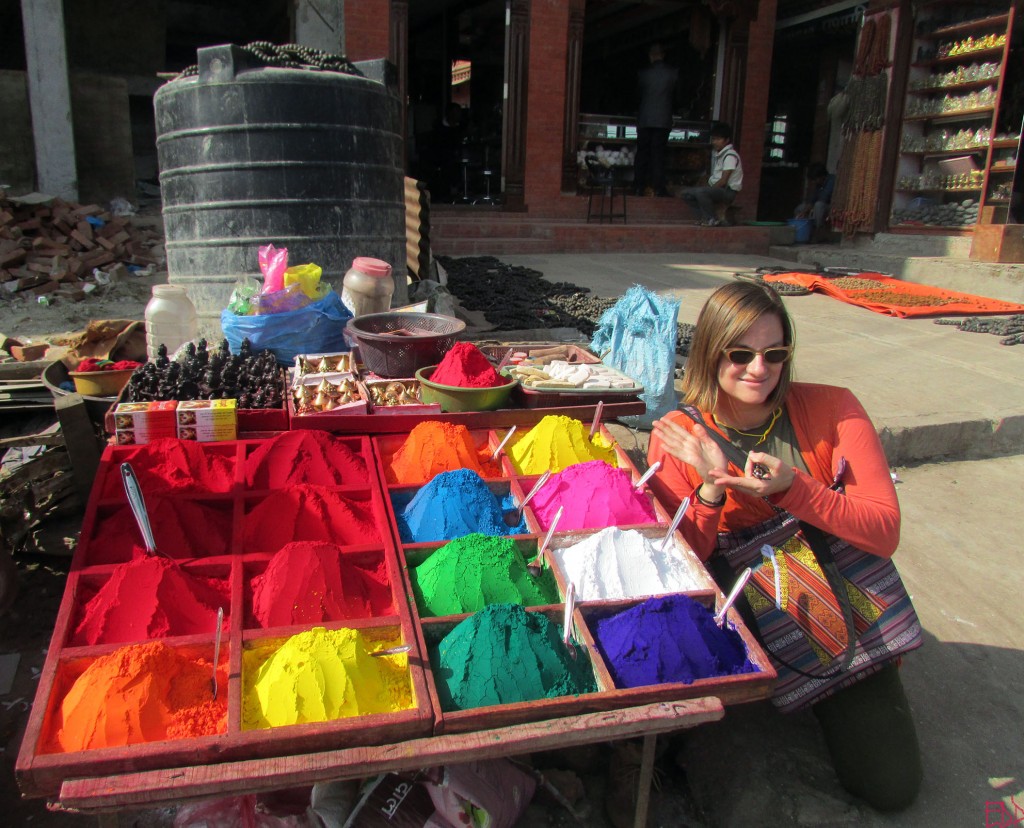
Pashupatinath Temple (Photo: Emily O'Dell)

Entrance to main temple (Photo: Emily O'Dell)
As we entered the complex, my guide pointed out a cremation ceremony taking place on one of the funeral pyres on the banks of the Bagmati River. “After the earthquake,” he said, “there were so many dead bodies that families had to wait in line for days to cremate their dead.”
While only Hindus are allowed into the main temple, all of the other temple buildings are open to non-Hindus. Strolling through the temple’s sacred sculptures and shrines, we passed by several male and female sadhus — ascetic yogis who have renounced the world to make liberation from death and rebirth their sole goal. Upon exiting, my eyes were drawn to the brightly colored powders being sold in stores and stalls on the side of the temple…

Exiting the temple (Photo: Emily O'Dell)